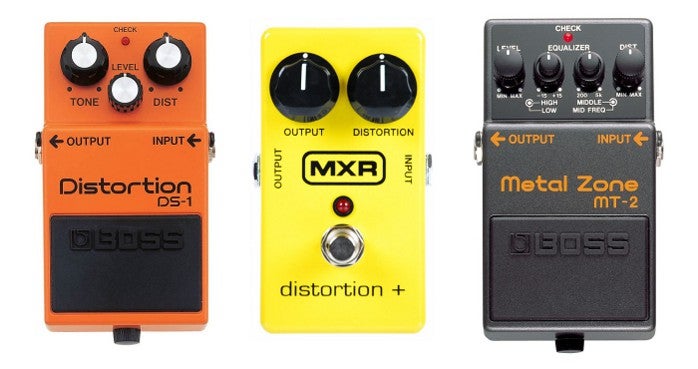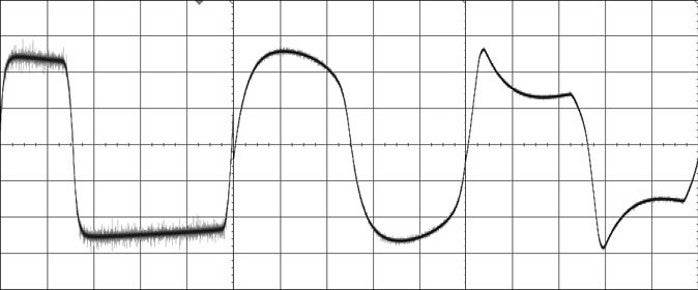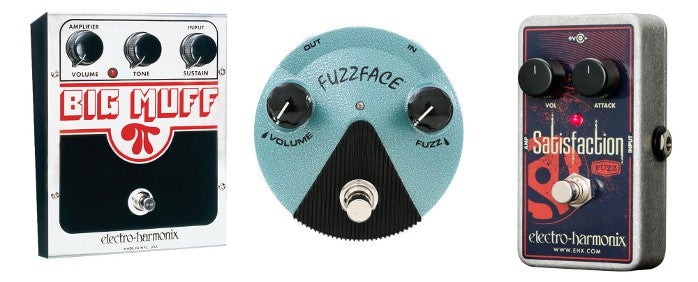Guitar Effects: Distortion, Fuzz or Overdrive?
Published on Thursday 20 August 2020
One of the things that makes the electric guitar so seductive is the insane range of different sounds you can get out of a single instrument. The electric guitar can be used to make something heart-breakingly subtle, just as easily as it can be deployed to unleash ear-splitting brutality. This blog deals with the latter – and we’re not talking about just cranking up the volume and hoping for the best, but the subtle art of guitar distortion in all its forms. That’s not to say you can’t crank it up. Back in the day, before the dawn of effects pedals, the only way to get a distorted sound was to push the volume of an amplifier so far that it started to crack. Thankfully, those times are gone and we can now enjoy the magic offered by distortion stompboxes, even at a more sociable volume.
There are roughly three different flavours of distortion to choose from: distortion, fuzz, and overdrive. However, complete beginners and seasoned string-pluckers alike can find it tough to wade through the sheer abundance of effects pedals now available. As such, this blog offers a few practical examples so that you get off to the best possible start in the world of overdriven guitar sounds. And hopefully, use our humble words of advice as a diving board from which to triple-salto, deep into the grim depths.
Fuzz: The Name Says It All
Even since the beginning of the ‘50s, guitarists have been consciously distorting their sound for recordings. Before that, any distortion was avoided at all costs and if it did happen to rear its head, it was usually down to a technical fault, a busted up amplifier, or recording equipment that was on the blink. From around 1960, people started to experiment with building something called an ‘effect pedal’, so that amps wouldn’t have to suffer so much abuse – this would later be known as ‘Fuzz’. Fuzz pedals produce complex overtones and transforms the audio signal into an almost square-wave shaped sound (much like bit-crushing).
The sound of a fuzz stompbox is perhaps best compared to the sound of an angry bee. To give you perhaps … a better idea of what this means, a few good examples of songs that have used fuzz to great effect have been included below. American Woman by Guess Who; (I Can’t Get No) Satisfaction by the Rolling Stones, and of course, Foxy Lady by Jimi Hendrix. All of them are perhaps the best known songs that are packed with fuzz. Other genres that famously like a bit of fuzz include classic rock, blues, and indie.
That distinct sound you can hear on American Woman and Satisfaction can actually be almost perfectly recreated using the Satisfaction Fuzz. The FFM3 Fuzz Face Mini Hendrix from Dunlop is actually a slimmed down and upgraded version of the original and classic Fuzz Face that Hendrix used to conjure his fuzz tone. The legend that is the Big Muff Pedal from Electro Harmonix has maintained immense popularity for the last twenty years, re-emerging every time guitar music gets an overhaul and resurges. As such, there are plenty of versions out there, and the Big Muff Pi is just one of them. It’s also a great starting point before exploring Big Muff territory in more depth.
Overdrive: The Whipped Cream of the Guitar World
Who doesn’t like a little whipped cream? The rolling tonal character of overdrive can be compared to sound you make if you can roll your Rs – or a revving engine. This cream-filled sound is sweetest in combination with valve (also known as ‘tube’) amplifiers. This is because overdrive pedals are specially designed to blast through the valves of your amp. This can translate as nice, light overdrive that roughens the edges of a clean signal, or a full-fat, creamy boost to a signal that’s already been distorted. Throughout the ‘70s, overdrive was insanely popular and guitarists the world over still have a special place on their pedalboards for this classic effect.
Within its 50 years, this humble effect has been used widely to help shape an intimidating range of genres. Besides blues and rock, metal would also be nothing without overdrive. Which, since of the three pedals this blog talks about, overdrive is actually the mildest, that’s going some. But it’s all because it’s able to add its rough touch of warm overtones to literally anything. To cite a good example of a solid overdrive stompbox, it’s a well known fact that Stevie Ray Vaughan was a dedicated fan of the Tube Screamer from Ibanez. As such, version TS9 is our recommended introduction to the heady world of tube-based overdrive.
The well-loved sound of the Boss SD-1, like most overdrive pedals, is often used as a booster to give amps with a built-in distortion that extra bit of ‘umph’ for extra-warm and extra-present solos.’No More Tears’ by Ozzy Osbourne offers a great example of what this pedal can do. A third overdrive option is something like the Marshall BB-2 Bluesbreaker. This outstanding overdrive pedal comes as close as it gets to the kind of sound that Eric Claption used when he was part of the legendary power-trio, Cream.
Distortion: The Radical
Classic and modern rock and metal use plenty of distortion to carve out tight riffs and extreme solos. The effect of distortion is maybe the most radical since it can take your squeaky clean amp sound and completely transform it into a growling, screaming beast – and it can do this at pretty much any volume. Distortion also has a more dense tonal character since it often comes with its own compression.

Over in the pure rock section of distortion pedals, we find the Boss DS-1. This is an awesome pedal if you’re just staring to experiment with what distortion can offer. This ever popular stompbox shapes a balanced and versatile distortion and can be seen at the feet of guitar virtuosos like Steve Vai, as well guitar music subversive, Kurt Cobain of Nirvana. And, since this little pedal has been in production since 1978 and is still going strong, this is only the barest possible selection of the artists that have made use of its many charms.
If you’re looking for something that’s brutal and intense enough to handle something like metal, then the Boss MT-2 would be a much better introduction to distortion. The wide ranging control that this pedal provides gives you access to a massive distortion palette and can even get your tone close to that of Metallica. This pedal is so versatile that it’s little surprise that it’s one of the most bought of all Boss pedals. However, if you prefer things to feel a little more organic, but still heavy, then maybe the MXR Distortion+ is more your thing.









